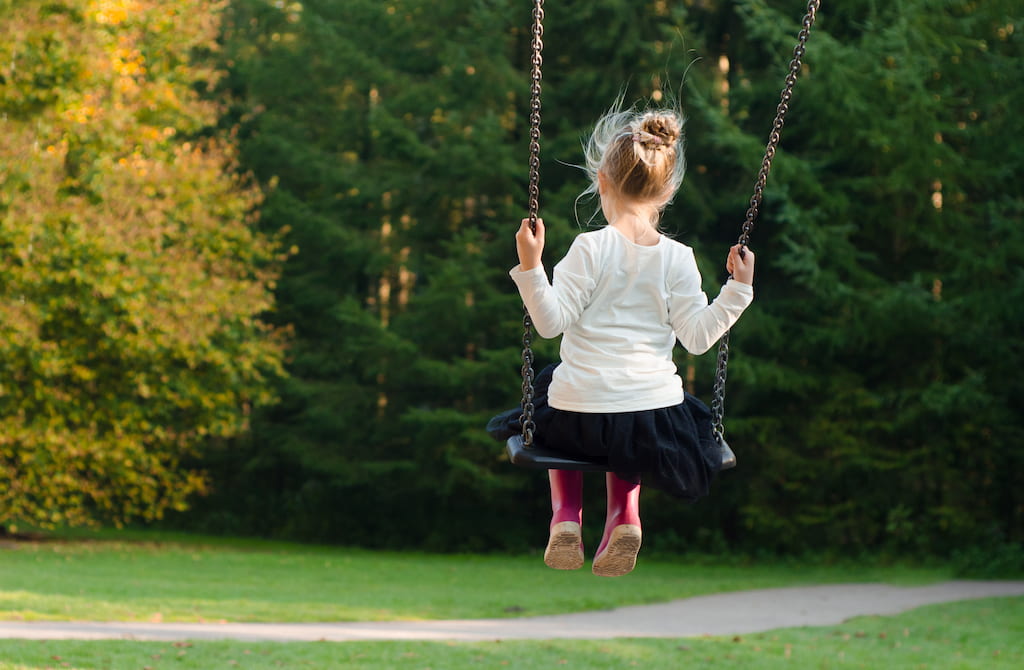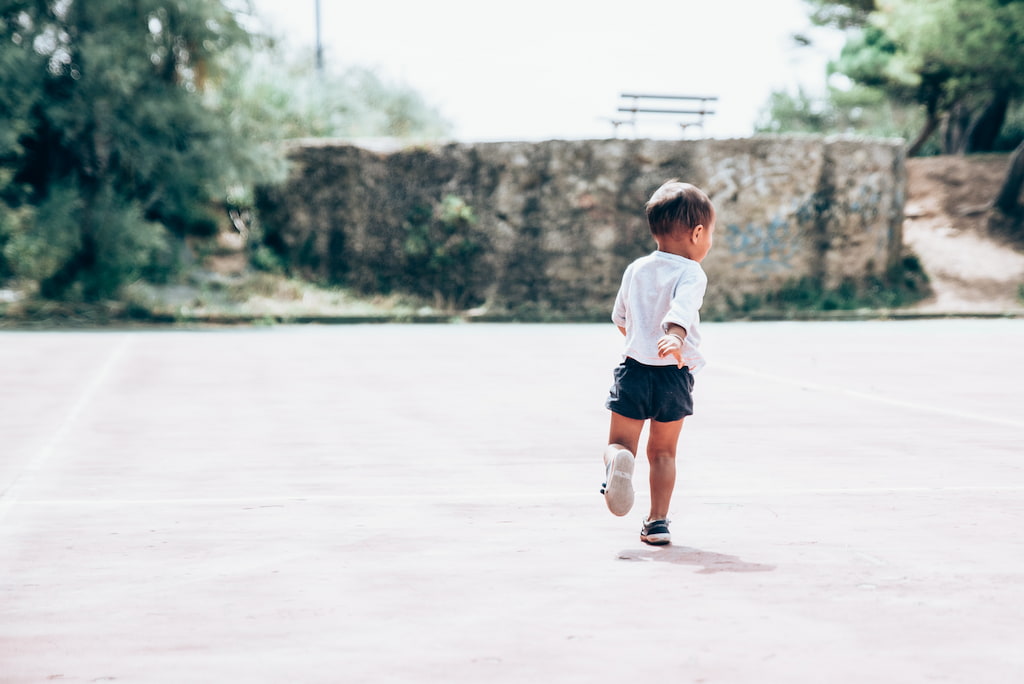The Benefits of Mindfulness for Children

Mindfulness means bringing our focus and attention to what’s happening in the present moment with openness and without judgment. You may have noticed that this is difficult to do sometimes… As an adult, you may be stuck on what happened in the past, regrets, or what you want to do in the future, having a hard time living in the present. By the time we’re grown, we’ve often developed patterns of thought and behavior that can make it harder to embrace a non-judgmental mindset. Therefore, it can be helpful for us adults to practice mindfulness. So, what about children?
Take a moment to reflect back on your childhood. Was there a time when a caregiver called you back inside but you didn’t hear because your full attention was on a game you were playing? Or do you remember when you were eating ice cream and just fully enjoying its flavor without thinking about anything else? Sometimes, it’s a lot easier for children to be present in the moment. In fact, it wouldn’t be a stretch to claim that childhood is simply living intensely in the present moment. Children are in fact inherently more likely to seize a moment through mindfulness.
If a child is eating their favorite food, the only thing they do in that moment is eat that food. They enjoy it, savoring the food. Or while playing a game, they can stay focused for minutes or even hours at a time. When children are playing, they often act as if the world is merely that game. However, this ability, which prevails in childhood, may face the risk of being forgotten and lost as one gets older, as many of us have likely experienced. We were probably more open, less judgmental, and more mindful when we were kids. However, some of the changes we experience as we grow up may have caused us to unlearn these tendencies.

New dynamics, responsibilities, and judgments that come into children’s lives as they grow up may result in decreasing openness and attentiveness. Thus, supporting children in protecting and developing their mindfulness without unlearning their natural impulses toward curiosity and wonder, is crucial.
This is where mindfulness exercises and activities come into play. Through these exercises, we can help children maintain, develop, and deepen their open attitudes. Strengthening and preserving this thought muscle with mindfulness exercises from a very young age can support them in sustaining this disposition as they grow up. By their nature, children approach their environment in an open and non-judgmental way. Our duty as adults is to help maintain this disposition through the mindfulness practices we can offer and encourage.
How Can We Protect & Develop Children’s Mindfulness?
As children grow up, they continue their cognitive, social, and emotional development by observing and learning different behaviors and ways of thinking from the adults around them. Therefore, it would be a vital step for the adults in children’s periphery, especially close family and school, to approach the child in a patient, non-judgmental, and compassionate way. Hence, the child watching and observing the adults can internalize this attitude as well and begin to deepen their mindfulness practice.
In addition, adults can guide, support, and open up space for the child to practice mindfulness. So, how can we guide children in this regard? The answer is actually hidden in the tiny details of daily life… For example, you can have them name the places, animals, and colors they see on their way to school, you can ask them to describe the taste or smell of something they’re eating… In this way, it’s possible to practice countless mindfulness activities and exercises throughout the day.
Another useful method could be applying mindfulness exercises developed by Eline Snel. We can enable children to get in touch with their bodies and while doing so we can incorporate the language of play. Children’s yoga activities can also help children to develop their capacity to be present in the moment and to deepen their connection with their bodies.

It’s imperative that adults modeling and encouraging mindfulness don’t use these exercises as punishment, particularly at nurseries, schools, or at home. It’s fundamental to incorporate these activities into children’s daily lives in a way that they can actually enjoy and without putting any pressure on them. Children’s ability to integrate these practices into their daily lives by themselves will depend on whether they embrace and learn to see mindfulness as a positive tool.
The Benefits of Mindfulness for Children
We’re often more familiar with the importance and benefits of mindfulness in the world of grown-ups. Though, we’ve been hearing more about the concept of mindfulness for children these days. In fact, mindfulness for children facilitates similar skills and growth as it does for adults.
However, maintaining and improving this mental clarity, being non-judgmental, and centering oneself in the present moment, natural tendencies for children, are of great benefit already. How? Mental clarity can be a significant protective factor for a child’s physical and emotional resilience, both at this age and as a future adult. Because of this, people have begun to study and observe the benefits of working with children in the field of mindfulness.
So, what could be the benefits of mindfulness for children? Firstly, being present in the moment and having a non-judgmental approach contribute to the development of cognitive skills such as focusing, learning, memory, establishing cause-effect relationships, and analyzing.
Mindfulness has numerous positive contributions not only to cognitive but also to physical, emotional, and behavioral development. By forming a connection with the body in the early years, children can enhance their understanding of their own body, its signals, and its boundaries. This increases the physical resilience of the child, enabling emotional flexibility.
You may be asking how this works. Emotional resilience and flexibility are closely related to a relaxed nervous system. Through centering our mind and body in the moment, our nervous system relaxes. A calm mind balances the fear and anxiety center of the brain and a relaxed nervous system makes the child more resilient to stress, trauma, and challenging emotions or situations.

One of the ways children can practice mindfulness is by focusing on their breath, helping them to become more aware of their body, their motivations, feelings, and thoughts by managing impulsive behaviors. Likewise, approaching themselves with compassion can also help them to get in touch with their feelings and thoughts. The state of mindfulness paves the way for the child to accept, define, and express their feelings and thoughts more easily. Instead of suppressing their emotions, they begin to understand and name them, allowing them to navigate not only the pleasant emotions but also the more challenging and difficult ones.
Beside its effect on individuals, mindfulness can also have social impacts… Let’s take a closer look at the social effects we’ve mentioned. Since mindfulness includes compassionate consideration, it can prevent children from approaching themselves and others with feelings of holding a grudge, hatred, and violence. Additionally, mindfulness can also nurture and nourish having and extending empathy for oneself and others. Love, compassion, and happiness help children form better relationships and therefore maintain a happier social life. At the same time, being able to look at their feelings and thoughts through a non-judgmental, open, and compassionate lens guides children toward being empathetic in their relationships with other children and adults. In other words, thanks to mindfulness, children can grow up as people who can love themselves and establish healthy relationships by being more understanding of others.
All in all, mindfulness has various physical, cognitive, social, and emotional benefits for the development of children. Therefore, we must support the maintenance and development of this ability that children already possess. Approaching oneself and one’s feelings openly and without judgment from an early age and knowing and understanding oneself will continue to maintain the individual’s psychological well-being in adulthood as well, allowing them to grow up as happier and more peaceful individuals.
Translator: Ebru Peközer

